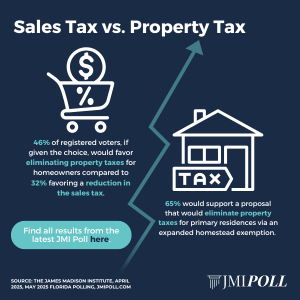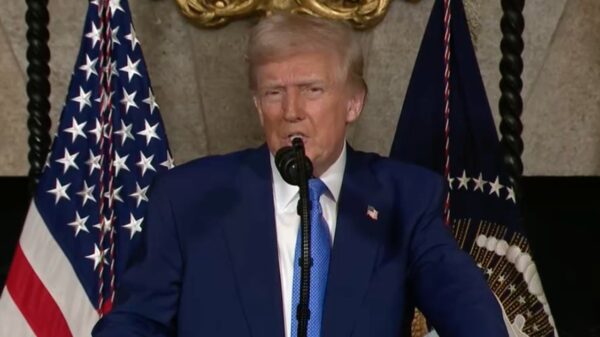Last week, the University of Virginia’s Center for Politics released its first “Sabato’s Crystal Ball” looking at the 2020 presidential race. Their first analysis shows President Donald Trump is ahead in Florida even if the race starts as a tossup.
The Crystal Ball estimates Trump starts ahead in states with 248 electoral college votes while the Democrats lead in states with 244 votes. According to the Crystal Ball, the Democrats can count on 183 safe electoral college votes while Trump can count on 125. However, only 61 electoral college votes are in states that lean Democratic while 123 are in states that lean GOP including Florida.
“The omissions from the initial toss-up category that readers may find most surprising are Florida and Michigan,” wrote Kyle Kondik, the managing editor of Sabato’s Crystal Ball.
“With an approval rating in the low-to-mid 40s — and, perhaps more importantly, a disapproval rating consistently over 50 percent — it would be easy to say that President Trump is an underdog for reelection. The president won only narrowly in 2016 and did so while losing the national popular vote, making his national coalition precarious. He has done little to appeal to people who did not vote for him, and a Democrat who can consolidate the votes of Trump disapprovers should be able to oust him unless the president can improve his approval numbers in a way he has demonstrably failed to do in the first half of his term,” Kondik wrote.
“At the same time, the president’s base-first strategy could again deliver him the White House, thanks in large part to his strength in the nation’s one remaining true swing region, the Midwest,” Kondik added. “He’s an incumbent, and incumbents are historically harder to defeat (although it may be that incumbency means less up and down the ticket in an era defined by party polarization). Still, Crystal Ball Senior Columnist Alan Abramowitz’s well-regarded presidential ‘Time for Change’ model, which projects the two-party presidential vote, currently projects Trump with 51.4 percent of the vote based on the most recent measures of presidential approval and quarterly GDP growth (the model’s official projection is based off those figures in the summer of 2020). Arguably, the state of the economy is the most important factor: If perceptions of its strength remain decent, the president could win another term. If there is a recession, his odds likely drop precipitously. Meanwhile, it’s not a given that the Democratic nominee can consolidate the votes of Trump disapprovers, particularly if a third party candidate (Howard Schultz?) eats into the anti-Trump vote. As it stands, the state of the economy next year remains unknowable, as does the identity of Trump’s challenger (Trump himself remains very likely to be the GOP nominee, although there’s always the possibility that someone else may ultimately be the candidate).”
Calling Florida a “bona fide swing state,” Kondik pointed to Rick Scott’s win over U.S. Sen. Bill Nelson, D-Fla., as proof the Sunshine State is leaning to the GOP.
“We know that Nelson was a weak incumbent whose age was showing and that now-Sen. Rick Scott was an unusually strong and well-funded challenger in a year like 2018,” Kondik wrote. “Still, Scott winning was, it has to be said, one of the great electoral oddities in midterm Senate election history. As Alan Abramowitz pointed out after the election, Scott’s performance in Florida stood out: It was the only state where his basic model predicting 2018 Senate results based on a state’s partisan lean and incumbency showed that the GOP clearly should have lost, but didn’t.
“This decade, Florida has featured two presidential contests, three gubernatorial races, and one Senate race each decided by a margin of 1.2 points or less. The Republicans won all but one of those races. Are the Democrats just unlucky, or does the GOP have a very small but steady edge in Florida?” Kondik added. “To start this cycle, we’re going to assume the latter in our ratings.”
Kondik listed four states–Arizona, New Hampshire, Pennsylvania and Wisconsin–as toss-ups with 46 electoral college votes. To win the presidency, a candidate needs 270 electoral college votes.
Kevin Derby can be reached at Kevin.Derby@floridadaily.com.




















